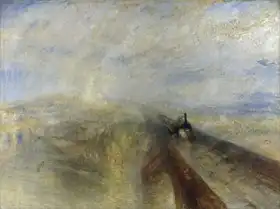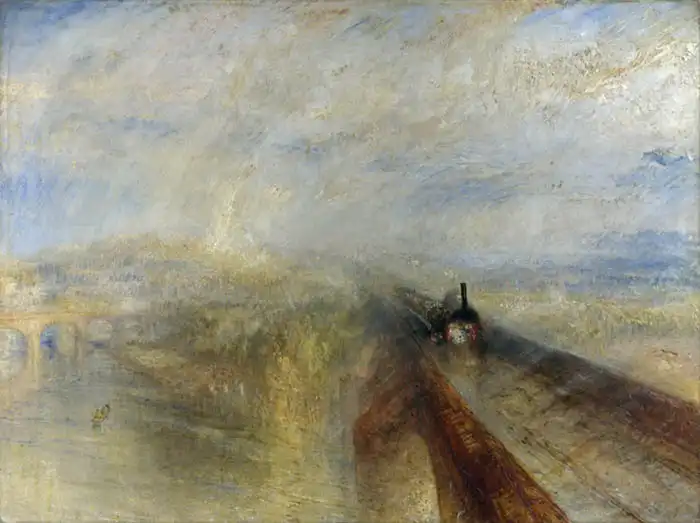About this finishing
Print. The image is printed on the top quality 10-ink HP Z9PS printer on HP matte 270 g / m2 paper. You can choose any size to an accuracy of 1 cm. A margin of 5 cm around the image is added to the size of the motif.


You can find a detailed description about our finishings
here.
Rain, steam and speed
Date:
19th centuryMedium:
oil on canvasLocation:
National Gallery, London, UKRain, Steam and Speed, or the Great Western Railway. In 1844, when the painting was created, it was a revolutionary innovation that changed not only the face of the landscape, but also the concept of time, industry, trade and leisure. It was a naturally attractive motif for painters. Turner managed to capture not only the speed and power of the train, but also the rain drumming against the train and the bridge. The rain emphasizes the power of the train as it relentlessly makes its way through the landscape (the open landscape composition also contrasts the advent of the industrial era with the rural countryside). Turner painted at a time when only a lucky few could move faster than walking speed - and suddenly it was possible to drive at many times that speed. The painting technique is typically Turnerian, approaching almost abstraction, which is helped by the rain, in which everything concrete and sharp disappears.
Turner painted picture Rain, steam and speed in 19th century. Prevailing color of this fine art print is vivid and its shape is landscape. This art piece is located in National Gallery, London, UK. This image is printed on demand - you can choose material, size and finishing.
Joseph Mallord William Turner (1775-1851). English
Romantic landscape painter. His style laid the foundations for
Impressionism. In his time, he was considered a controversial artist, today, he is recognized for his approach to landscape painting. He worked with light (he used to be known as the painter of light). He also masterfully painted with watercolours. An example of his refined style, which influenced the French impressionists, is his
Rain, Steam, Speed, in which he hinted at the form objects and plot of the painting using only the mixing of colours. A very similar work is also
Fighting Temeraire (a battleship that rose to fame in the Battle of Trafalgar) from 1839, in which the famous ship pulls into the steamer docks for dismantling.



